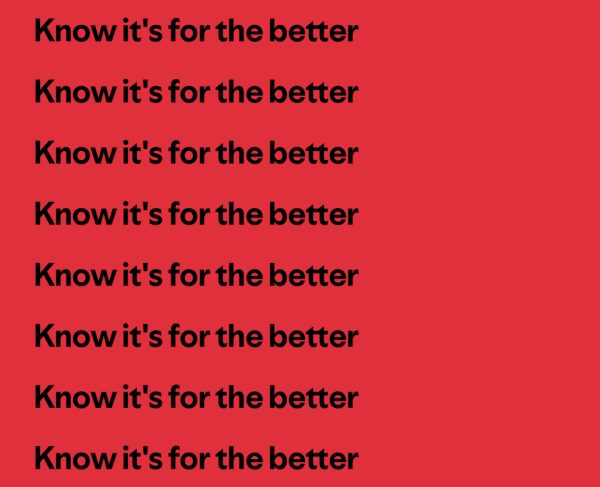Teens drive their way to freedom
The process of teens learning how to drive can be a challenging and sometimes odd experience.
photo via gettyimages.com under Creative Commons license
Learning to drive well depends on the instructor as well as the student.
Every person has their own interpretation of their teenage years. If it’s anything like a ‘90s pop music video, it is mainly summed up by three things: partying, dancing and cars.
Through the eyes of a teenager, the most exciting thing about reaching this age is finally being able to drive. The ability to drive gives a sense of power and responsibility, two things that adolescents seem to desire. That’s why it’s no surprise when more and more teens apply for their license and sign up for driving school as they reach this pivotal age.
According to the Department of Motor Vehicles (DMV) website, teens in California are eligible to apply for a learners permit at the age of 15½. After six months, at the age of 16, teens can apply for their provisional license. However, they must first complete their driver’s education with an instructor.
As summertime emerges, more teens take advantage of their clear schedules and begin working on getting their drivers license. For students who already have their permits, taking lessons with a driving instructor is the next step towards freedom.
Ani Davtyan, president of Glendale Driving School, says that summertime is when they get most of their teenage clients. “Because of summer school, more students come in for lessons,” Davtyan said. Surprisingly enough, throughout the rest of the year there is an equal amount of adults and teenagers, if not more, who taking lessons. “We see more adults taking a refresher course because the older they get, the more they forget the rules and ways of driving,” Davtyan said.
According to the AAA Foundation for Traffic Safety, only 44 percent of teens got a license within a year of reaching the minimum age of qualification for their drivers license in their state.
For some teens, driving right away is not necessary. For others, it’s a means to escape the boredom that accompanies them when they cannot drive. Junior Ani Hovasapyan said that she doesn’t like to stay home all the time which is why she was quick to apply for her permit and later, her license. “It makes everything way easier and better,” Hovasapyan said. “I’m home all day so it’s nice to get out once in a while all by myself if it gets boring at home.”
New drivers are often fearful of being on the road since it is their first time sitting behind the wheel. The responsibility that comes with driving is something that some teens are not prepared for but must learn to accept.
Junior Cynthia Babakhanian described her first time driving as a “nerve-wrecking” experience. “I had never even sat in the driver’s seat before, but after getting on the road, I kind of just told myself that I have to do this either way so I wasn’t that nervous anymore,” she said.

Teens await to reach the required age to apply for their drivers license.
Teenage driving is often tied with the idea of reckless driving. According to the Centers for Disease Control and Prevention, the risk of crashes are higher among 16 to 19 year olds than among any other age group.
Every student is unique, according to Davtyan. “There is really no way to differentiate older drivers and teenage drivers because everyone drives differently,” Davtyan said. “For the most part, it also depends on the instructor and the way they teach their students,” she said.
The fear instilled in new drivers is also encouraged by the uncomfortable tension between an instructor and a student. According to Davtyan, this is why instructors are told to get comfortable with students, relieve them of the stress, and help them perform better. “We make sure our teachers make students feel relaxed so that they won’t panic while driving,” Davtyan said.
Junior Arthur Ovsapyan described his first time with his instructor as a strange and scary experience. “My instructor was an interesting man,” Ovsapyan said. “He made me drive on the freeway during our first lesson. I was trying to stay calm while he was just sitting and eating almonds.”
His first lesson took another odd turn when his instructor had him drive to North Hollywood to buy used car parts. “We stopped at this secluded little auto shop where he made me stay in the car as he bought some cheap parts,” Ovsapyan said.
Sometimes instructors go out of their way to help their student drive comfortably. Junior Cynthia Shamerzian’s instructor helped her overcome a significant challenge. “While we were driving uphill, I noticed a squirrel up in the middle of the road where we were supposed to pass,” Shamerzian said. “I stepped on the brakes to avoid hitting the squirrel when my instructor told me to continue driving.”
After she refused to drive over the creature, her instructor got out of the car to move it himself. “He just told me to put on the parking brake and he suddenly got of the car,” Shamerzian said. “He was pretty scared of the squirrel himself. It took him a while to step around it to make it move. It was funny because he was such a big guy with dark sunglasses and the little squirrel made him uncomfortable.”
In the end, students seem to know that they must listen to what their instructor tells them in order to learn how to drive properly. “I just took what my instructor said and applied it, but I don’t think you can truly be comfortable driving until you drive on a regular basis,” Babakhanian said.

INTERESTS/HOBBIES: knitting
EXTRACURRICULAR ACTIVITIES: I walk my dog everyday
THREE WORDS TO DESCRIBE ME ARE: umm ya ok
IN TWENTY...








